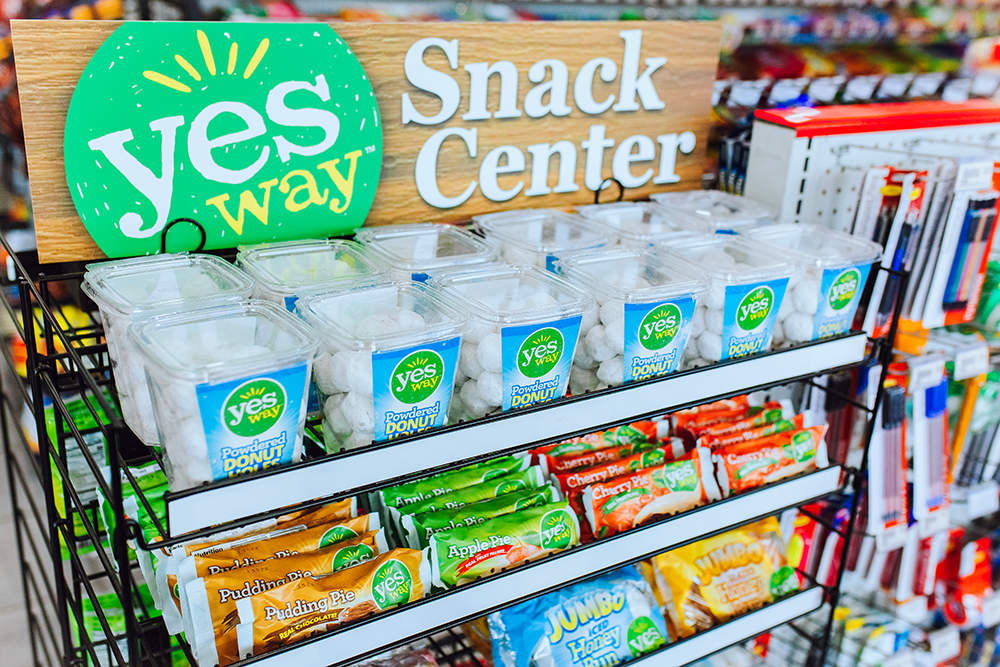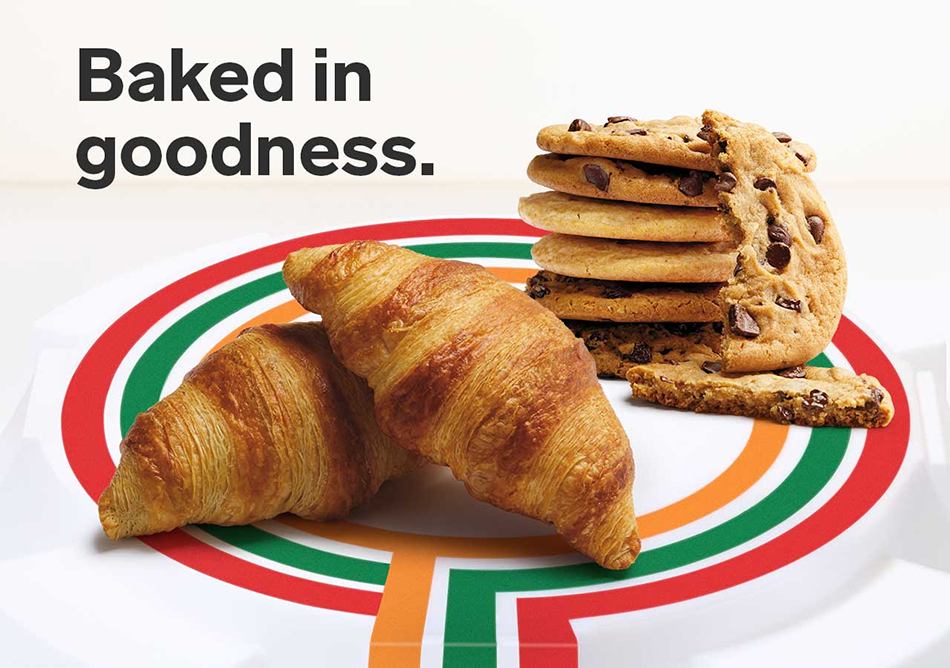Since last March, COVID-19 has altered the way Americans live, work, shop and eat. A survey conducted in May 2020 by Influence Central, a marketing organization, found that some Americans are making better food choices during the pandemic, including eating more fruits (42%), more vegetables (30%) and more protein (30%). However, 47% of respondents say they’re eating more sweets than pre-pandemic, which is not surprising. Reaching for a sweet treat is a common response to stress and boredom.
Research commissioned by General Mills found that the pandemic has spiked a craving for comfort food, with 26% of survey respondents hankering for baked goods more than normal during the past six months. The most-in-demand treats were cookies (57%), bread (50%) and cake (42%), the survey discovered.
Commercial baked goods have been selling well since the pandemic began. “We’ve been seeing a 7 to 10% year-over-year overall increase,” said Eric Richard, industry relations coordinator, International Dairy Deli Bakery Association. “The year-to-year percentage for in-store fresh is not nearly at the same level as commercial, which makes sense. A lot of bakeries in retail settings have been closed or have been at limited capacity—at least in the early months of the pandemic.”
One big change for bakery is the former habit of buying baked goods in bulk. “People just aren’t buying a dozen donuts for an office event or rolls for a family dinner,” he said. “Their tastes haven’t changed. They’re still looking for those products. It’s the quantity that’s different. People just aren’t having the same get-togethers and occasions that they did pre-pandemic.”

 Yesway has transitioned away from self-serve bakery case items to pre-packaged private-label baked goods during the pandemic. 7-Eleven’s new Bake in Store program entices customers to enjoy cookies, muffins and butter croissants baked fresh daily.
Yesway has transitioned away from self-serve bakery case items to pre-packaged private-label baked goods during the pandemic. 7-Eleven’s new Bake in Store program entices customers to enjoy cookies, muffins and butter croissants baked fresh daily.
COVID-19 also has impacted self-serve foods. According to the U.S. Food and Drug Administration, there is no current evidence to support the transmission of COVID-19 from food or food packaging. However, the agency has advised foodservice operators to discontinue salad bars and self-serve food stations that require customers to share utensils or dispensers.
Before the pandemic, Yesway convenience stores of Des Moines, Iowa, and Allsup’s stores of Clovis, New Mexico, displayed fresh donuts in self-serve bakery cases. “Since then, the bakery case has transitioned to individually wrapped private-label items,” said Alan Adato, manager, merchandising and procurement for Yesway/Allsup’s.
It’s the same story in York, Pennsylvania-based Rutter’s stores. “Around mid-March, we decided to move all our fresh self-serve products to packaging,” said Joseph Bortner, manager, center store category, Rutter’s. “This allowed us to maintain and stay in business through the pandemic, while extending the shelf life of products previously unpackaged.”
The self-serve bakery case is still a good way to reach consumers, said Richard. “Offer these products pre-packaged, and maybe it’s one item in a package or two or three,” he said. “Consumers want these products, but they’re not going to commit to a dozen.”
Expect to see a greater use of bags and pouches for merchandising all types of foods, according to the latest “Flexible Packaging Assessment Report” from the Association for Packaging and Processing Technologies. Advances in materials lower the cost of packaging, give shoppers a better view of the product and extend the shelf life of the food inside.
“Packaged sweet snacks are typically one of the more impulsive purchase categories in a c-store,” said Jayme Gough, research manager, NACS. “Items that are pre-packaged tend to be a great offer for customers who are on the move and will eat while performing some other activity.”
Bakery products are highly impulsive, and so we typically look to bundle them with other staples in the store.
Cooking Up a Program
C-stores can take several paths to offer customers a variety of baked goods. Retailers can source packaged products from vendors, choose a branded turnkey program, partner with a commissary that serves multiple locations or bake fresh items in store. They can even offer customers another retailer’s products as King Fuel, a 14-store-chain, is doing with Einstein Bros. Bagels in Houston, Texas.
Some larger chains, such as Yesway and Allsup’s, offer their own private-label bakery items that are made and packaged in facilities across the United States. “Items include fried pies, brownies, gourmet cookies, mini donuts and donut holes from California, honey buns from North Carolina, muffins from New Jersey and marshmallow rice squares from Pennsylvania,” said Derek Gaskins, chief marketing officer, Yesway.
“We source our private-label items from suppliers who provide quality products at a great value,” he said. “Each brand of bakery items is stocked in their respective stores to provide a consistent selection of products for customers, and we’ll continue to explore opportunities to reciprocate across banners and offer a variety of each brand in our banners.”
The Rutter’s bakery sells traditional donuts, brownies, loaf cakes and muffins, as well as crème-filled whoopie pies, a regional favorite. The chain offers products that are delivered fresh, baked in-store and prepared or finished products that can be thawed and served. “We’ve taken a blend of all methods to increase variety while maximizing shelf life and margins,” said Bortner. “I wouldn’t say one is better than the other. It all depends on the product quality and programming with the supplier in order to make the most out of any particular method.”
Fresh Baked
The aroma of warm pastries and cookies fresh from the oven serves as a form of “sensory marketing,” a tactic aimed at appealing to a consumer’s senses since smell is strongly linked to emotion. According to the American Marketing Association, an attractive scent can entice customers to stay in a store or business up to 44% longer, and certain smells can encourage hunger, boost alertness and prompt purchases.
The Plaza Pantry Bakery inside the Montevideo Travel Plaza in Montevideo, Minnesota, bakes a wide range of pastries in-store every day, which “makes the store smell amazing,” said Robin Envoldsen, manager.
“We purchase par-baked donuts, pastries, cookies, muffins, strudel and turnovers from Henry’s Foods,” she said. “In the early mornings, we focus on donuts and fresh-baked caramel rolls. Midday, we shift to muffins and strudel and move those items to the center of the case. Cookies are baked in the late afternoon hours to flood the store with the enticing smell.”
The travel plaza also creates a feast for the eyes. “We use a variety of sprinkles and colored frostings,” Envoldsen said. “We change them with every season, and we have a very talented baker on staff that incorporates her fresh ideas and has a special touch.”
At 7-Eleven, fresh bakery and multi-day packaged bakery offerings are made and delivered by local partner bakeries, but the chain also gives customers that “just out of the oven” experience through a pilot program called “Bake in Store.”
Currently available at more than 2,000 select locations, “this program allows us to prepare craveable pastries like croissants, cookies and muffins daily—sometimes made multiple times a day,” said Vareesha Shariff, product director, 7-Eleven. “Our most popular items are cookies, including the ever-popular chocolate chip, oatmeal and red velvet. The No. 1 pastry item is the all-butter croissant.”
Variety and Promos
Seasonal bakery items and limited-time offers are a proven way to spice up the everyday bakery case. “People still celebrate,” Richard said. “They look for pumpkin spice and maple-flavored products in the fall, so it’s important that bakeries have those as part of their fall inventory.”
At Rutter’s, “we’ve always tried to maximize the bakery program by implementing some seasonal favorites, and LTOs offer us a way to add excitement and something new to the case,” said Bortner. “Bakery products are highly impulsive, and so we typically look to bundle them with other staples in the store,” he said.
“Having bakery items in a good spot is the true key to a successful program,” said Envoldsen. “Our bakery case is at the end of a 21-foot coffee bar that features many items—coffee, juice, etc. We also have our cold-line merchandiser in the same area, so some customers may grab a soda, water or another cold item with their bakery product. Of course, the smell of the product throughout the store is great marketing.”
Merchandising tactics vary by bakery SKU at 7-Eleven. “Packaged bakery items are merchandised in an inline set, typically adjacent to the coffee bar or on a rack at the sales counter,” said Shariff. “We display seasonal shippers in high-traffic areas to drive impulse purchasing. We also strategically position deep-value promotional items under the front sales counter and in a basket at the register to try and catch the customer’s attention during checkout. Fresh bakery and bake-in-store products are merchandized in their designated cases, usually near the coffee bar.”
But don’t wait for shoppers to discover those tasty treasures inside your store. Use social media to generate interest in your baked offerings, Richard advised, and make sure you stay in stock.
“There was a sense of hesitancy about buying fresh [foods] online, but now people are at a place where they feel comfortable doing that,” he said. For retailers who want a strong online presence, it’s important to have a robust online inventory, plus an accurate inventory tracking system.
“If someone is purchasing baked goods online, make sure those baked goods truly are available,” Richard said. “You don’t want shoppers receiving an order with missing items. And that could happen if your online platform doesn’t show all the products available and isn’t tracking the inventory properly.”